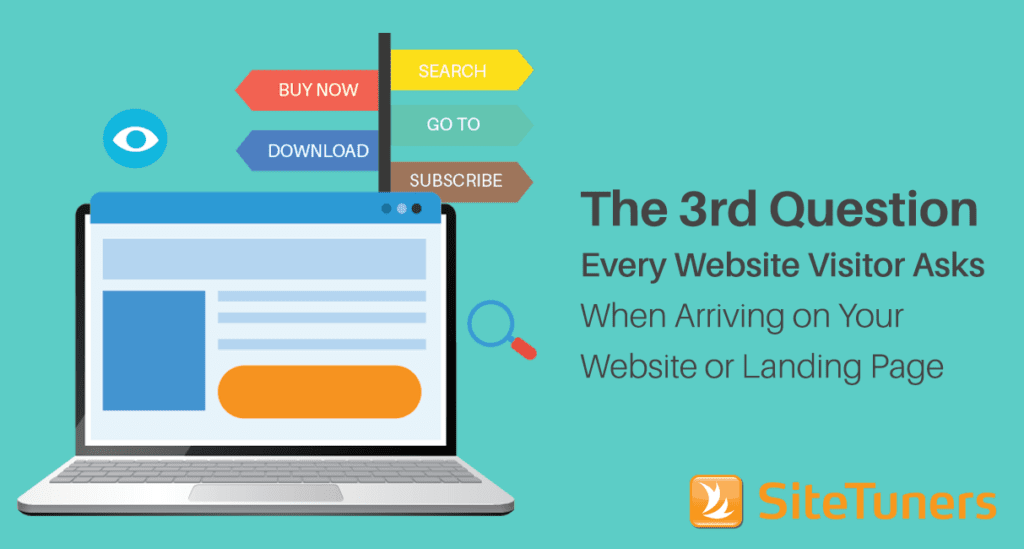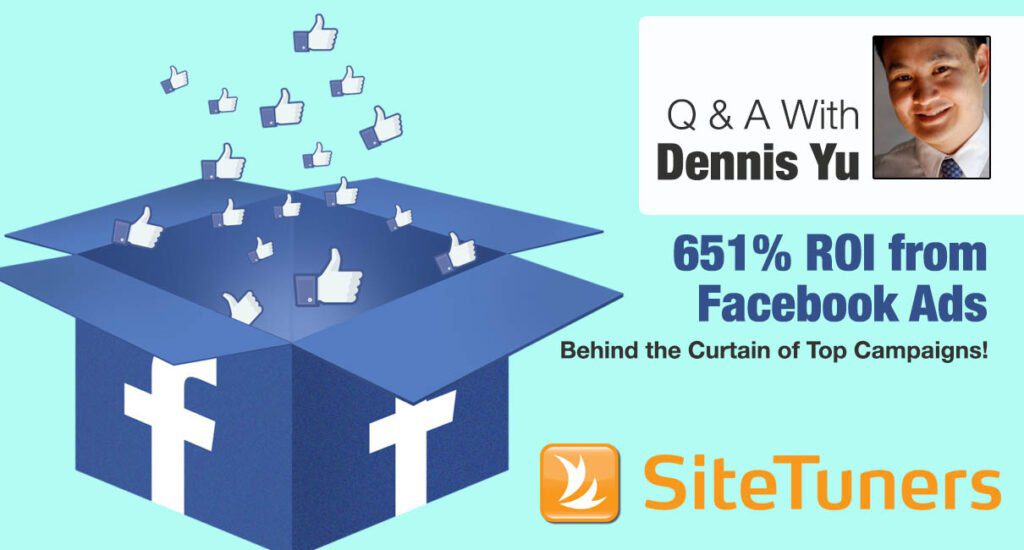Summary – Understand the top of the funnel by looking at visitor stats and website behaviors. Learn the three aspects you need to focus on to get better and meaningful traffic and how to align your content with user needs. Get insights into what happens once visitors are inside the customer acquisition funnel and how you can help them move forward all the way to their desired conversion action.
Understanding Your Funnel by Looking at Visitor Stats
In order to better understand your funnel, you need a customer journey map. You can map your customers’ purchase journey by looking at the number of visits they make on your web pages.
For instance, if your website offers customized workbooks for children, check your website tracking for the pages that users regularly visit. If you notice that visitors often read your blog posts, it’s a good indication that they’re already aware of your existence and are well into the Interest Stage. You can help them move further in their purchase path with a compelling offer, such as inviting them to a webinar. This will lead them to the Desire Stage and ultimately towards conversion.
Top of the Funnel
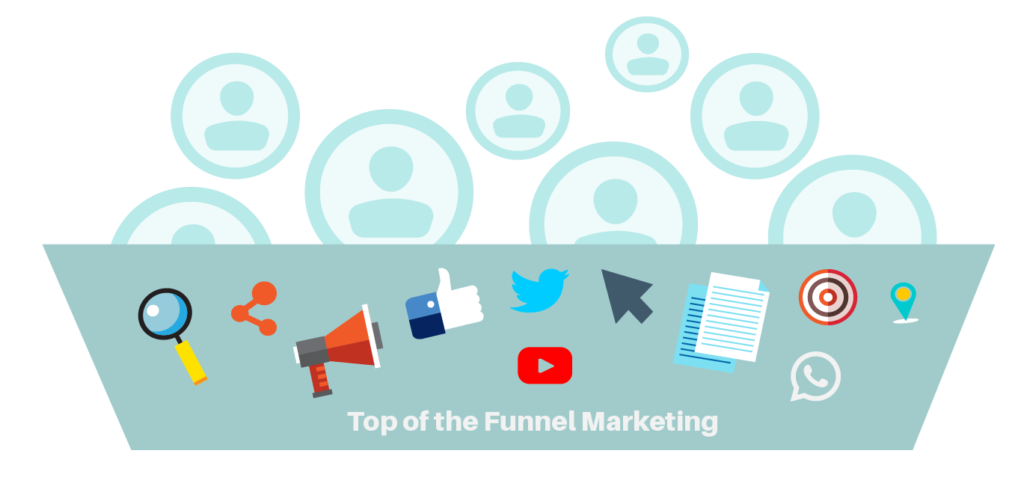
What better way to target the top of your funnel than with the primary goal of most marketers? Yes, we’re talking about traffic. Marketers stretch their resources across various platforms to increase the number of their website visitors. From SEO strategies to engaging social media campaigns, the goal is to cast a wide net to attract more potential customers or clients to your business.
For starters, here are the three aspects of traffic that you need to focus on:
- The source of the traffic – Testing can reveal which source is getting you the most traffic, and which ones are yielding poor results.
- The quality of the traffic – Are people just coming to your website from clickbait? That never ends well for anybody.
- The intent of the traffic – What are visitors expecting to get when they come to your website?
Out of these three, the most important aspect of incoming traffic is intent. The more information you have about the intent of the visitors, the easier it is for you to lead them all the way through the funnel.
It’s surely a marketer’s dream to achieve traffic with high conversion intent.
The perfect scenario for an e-commerce site is a smooth process of visitors going to their desired product pages and quickly hitting the checkout button.
For lead generation or subscription sites, a sight to behold is when visitors readily give out their information for them to be contacted about their services.
Imagine how the conversion rates of these businesses go through the roof, right?
Well, we all know this seldom happens in real life. Customers are not always ready to hit the Buy Now or Subscribe Now button, so marketing to the top of the funnel requires specialized attention and strategy. Unfortunately, a lot of marketing is completely targeted towards the bottom of the funnel. For some unknown reason, many websites assume all visitors are ready to buy.
So, how do you deliver to visitors who are merely looking for information?
Ways to Generate Meaningful Traffic
- SEO – Search Engine Optimization helps increase organic traffic to your site and landing pages. But you do have to choose and use keywords wisely to get high quality traffic.
- Social Media – Maximize the interactive nature of these platforms to generate awareness/curiosity and drive traffic back to your website.
- PPC – You can use paid ads to target top of the funnel and bottom of the funnel visitors. With sponsored ads, you can get high-intent traffic to your site and convert them as long as you deliver what you promised in the ad. Well-thought-out PPC campaigns provide good visibility and consistent traffic.
- Influencers and Affiliates – Great feedback and testimonies from well-known personalities in your industry gets your brand and products in front of a bigger audience.
- Offline Advertising and Celebrity Endorsements – Traditional advertising is ideal depending on the audience you’re aiming to impress. Offline events, trade shows, or workshops are great sources of traffic to lead people to exploring your website.
- Media-rich Ads – Animation or video ads that run on other websites can also generate interest for users to visit your website.
- Word of Mouth Publicity and Customer Referrals – Impressive buying experiences encourage your customers to tell their friends about it. Encourage your existing customers to spread the word about your brand through referral promo codes and incentives.
- User Registrations and Subscriptions – Lead generation activities such as webinars or online educational events are effective at creating awareness about your brand, products, and services.
- Existing Customers – These are the most valuable people in your email list. Make sure that you maintain a good relationship with them by sending relevant information and engaging activities to keep them as your loyal base of customers.
Scenarios to Consider When Visitors are at the Top of the Funnel:
- Curiosity about your business – When visitors see an ad about your business, they want to view your website.
- Researching something specific – Visitors are looking for good, quality content from a trustworthy source.
- Searching for a specific solution – They already know what problem they have, but don’t know what the best solution might be. Or they may know the solution but would like more in-depth information about it.
Understanding user intent and aligning it with the website goals is what really improves the success of a funnel. Therefore, when you have different visitors, with different intents, the funnels might vary.
Email Marketing at the Top of the Funnel
At this stage, your goal is to educate and create awareness around your brand, products, and services. So your emails must be content-oriented and should be relevant to your visitors’ informational needs. Newsletters, blog post links, webinars, or invites for brand awareness events are great tactics to help you with this.
That said, you can still include product recommendations or CTAs for purchasing. But you should highlight information above all. CTAs should be subtle and well-blended into helpful information.
For example, if a website is selling maternity clothing and publishes blog posts geared towards expecting new mothers, they can send a regular newsletter that features these posts as part of their top of the funnel marketing content. The newsletter itself would be informative and not salesy, but they can provide a subtle CTA within their blog posts about the type of clothing they have on their website.
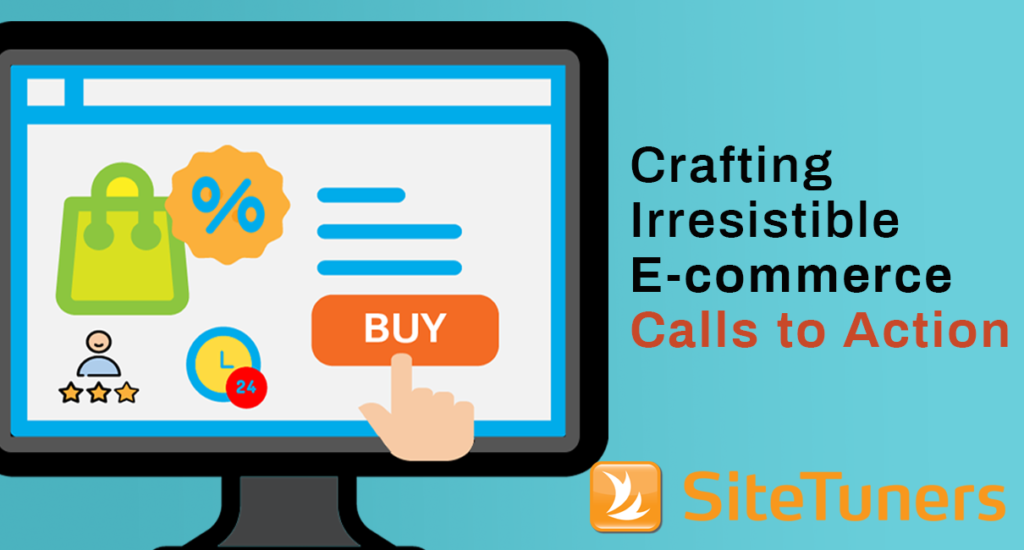
Improve your websites user experience and boost conversions
What Happens Inside the Customer Acquisition Funnel?

Keeping your visitors engaged up until the bottom of the funnel is the real challenge as this will determine your conversion profits. Therefore, you need to do everything right from the start to the end of the process.
As a digital marketer, you want to ensure that your traffic generation tactics bring more potential customers or qualified prospects. Once you successfully get that traffic, your website or landing pages should be able to provide interesting and helpful content to build confidence in online users. Now, your audience is in the middle stage of the customer acquisition funnel.
If you’re a business-to-customer (B2C) company, the middle stage is usually shorter. The customer just needs to be interested and have enough desire or need for what you’re selling in order to buy it. They don’t have to think long and hard to click the buy button, unless of course, it’s a very expensive item. The funnel for high-ticket conversions is more similar to B2B than B2C.
It’s a different picture for business-to-business companies. The interest and desire stages usually take longer. This is where it becomes necessary to have lead nurturing tactics in place. Having a lead nurturing system not only helps you keep your potential customers engaged, but also allows your business to evaluate or score for lead quality. Lead nurturing also ensures that customers consider your products or services as viable solutions to their problems.
Your goal in the middle stage is to help most of your online visitors and users move forward to the last stage or bottom of the funnel: towards a conversion.
What Is Essential in Conversion Rate Optimization (CRO)?
CRO is about increasing the percentage of visitors who are going to take the conversion action on your website.
Here are the following requisites to take note of:
- Clarify the purpose you are providing through your website.
- Understand who your target audience is.
- What are the needs of your target audience?
- Is your target audience really finding what they need on your website?
Every visitor asks themselves three questions when they visit a website: Am I in the right place? How do I feel about this site? What am I supposed to do here? A website that’s optimized for conversions is one that satisfactorily answers these three questions on every page of the website.
The Bottom of the Funnel
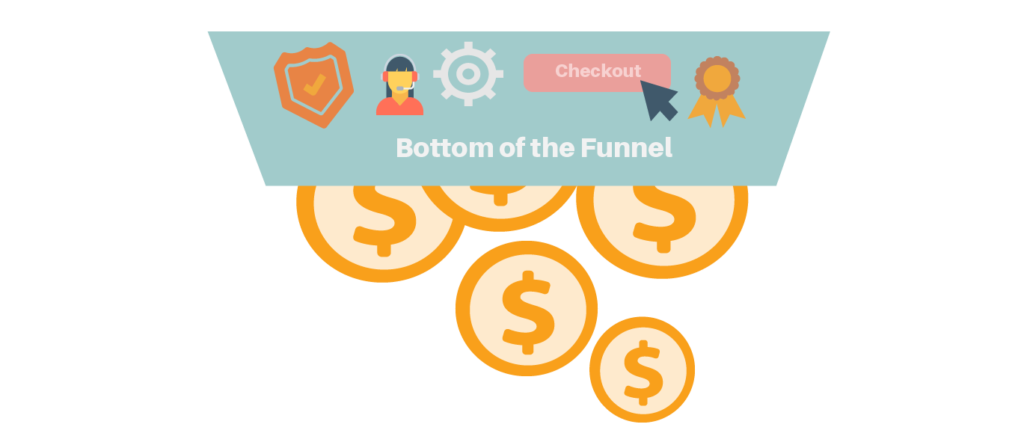
The main goal of the bottom stage of the funnel is conversions. It’s the part where people decide to become paying customers.
To successfully convert your online visitors, you need to understand their motivations and behaviors at the bottom of the funnel:
- Comparing before buying – Visitors already know the exact item they’re buying, and they know your website has it. They just want to get more details such as features, pricing, delivery timelines, or reviews before taking that final step.
- Specific intent to buy – Visitors have already decided that they want to buy a certain product from your website. It’s just a matter of going ahead with the purchase.
The key at this stage is for your website or landing pages to provide adequate, helpful information that enables your potential customers to make the conversion action. And once they decide to take action, the experience should be optimized to be easy, predictable, and free from distractions.
By optimizing your website’s customer experience from the start to the bottom of the funnel, you’re assured that your customers are satisfied and willing to come back for more.
Retention Phase
Your job isn’t done after your customer has successfully purchased your items or services. The customer’s post-purchase experience is just as important if you want to build loyalty to your business.
To pull this off, try these following tested strategies:
- Post-purchase registration
- Good customer service
- Good packaging and timely delivery
- Follow up emails
- Carefully segmented emails to keep the customer interest alive
- Making it easy for customers to return to the website by giving incentives or loyalty bonuses
- Giving the customers some reason to check the website regularly, such as introducing exclusive offers
- Encourage customers to refer the website to others
The great news though, is that in the Retention Stage, customers have already familiarized themselves with your business. It’s often easier – and cheaper – to retain existing customers than acquire a new one since people like familiarity and the comfort of going through a tried and tested route.
Email Marketing at the Bottom of the Funnel
If you’ve done a great job of providing relevant, helpful information and building interest and desire in the early and middle stages, then you’ve successfully laid the foundation for a conversion.
Your visitor now knows enough about your brand. You should focus on getting your prospects to take action.
This means prioritizing content that highlights your products and/or services as the perfect solution to their problems. Make sure you have clear calls-to-action that allow your prospects to finally go through with that purchase.
Conclusion
Effective targeting begins with learning about your online visitors’ intent and behaviors as they go through different stages of the funnel. Understand what your visitors are looking for and how they’re interacting with your website and content so you can provide them with the right information at the right time. Whether you’re targeting the top or the bottom of the marketing funnel, your customers’ needs should always be your focus to keep them coming back for more.
